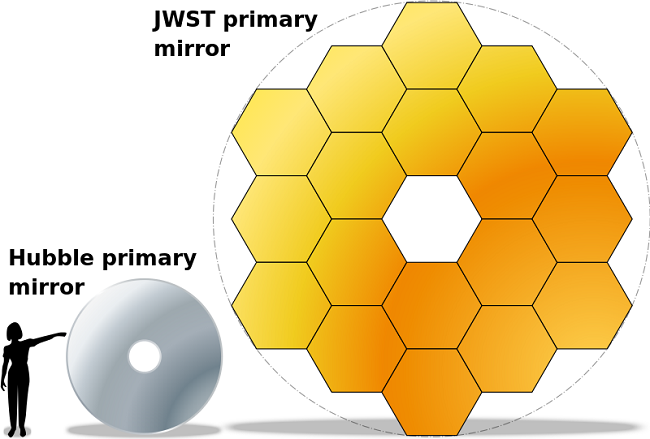
NASA’s top astronomers predict that in a few short years, we’ll have solid evidence on the existence of alien life. NASA announced recently that the new telescopes replacing the Hubble and Kepler space telescopes in 2017 will discover life outside the our solar system in the next 20 years. “I think in the next 20 years we will find out we are not alone in the universe,” says John Grunsfeld, a veteran astronaut that’s now a NASA science chief.
The notion of finding life in only 20 years stems from the massive success of the Kepler space telescope, which discovered 700 new planets in 2014 alone, some of whom seem potentially Earth-like. In light of these findings, coupled with the fact that there are 300 billion stars in the Milk Way ─ let alone billions of galaxies in the Universe ─ it’s only natural that scientists are confident life must existence somewhere.

Above: Hubble’s mirror vs JWST’s mirrors
The Transiting Exoplanet Survey Satellite (TESS), which is Kepler’s successor, launches in 2017. Hubble’s replacement, the James Webb Space Telescope (JWST), launches in 2018. Unlike their predecessors, the new telescopes can detect a broader range of planets, not just those larger than Earth. JWST is also equipped with a special spectrometer that can determine atmospheric conditions, one of the key indicators of whether or not a planet is or was habitable. JWST will sniff out whether biosignatures such as oxygen, carbon, or water are (or were) present in the atmosphere by analyzing the way light passes through the atmospheres in their orbit around the host star.
But a habitable planet doesn't necessarily imply intelligent life. The clues we find will only go so far as to indicate whether life can exist on this or that planet, but not whether it’s a single-cell microbial organism or a multicellular organism. Regardless, the implications of discovering alien life exists is groundbreaking and may ultimately necessitate the deployment of a probe or two.
Via ExtremeTech
Advertisement
Learn more about Electronic Products Magazine





